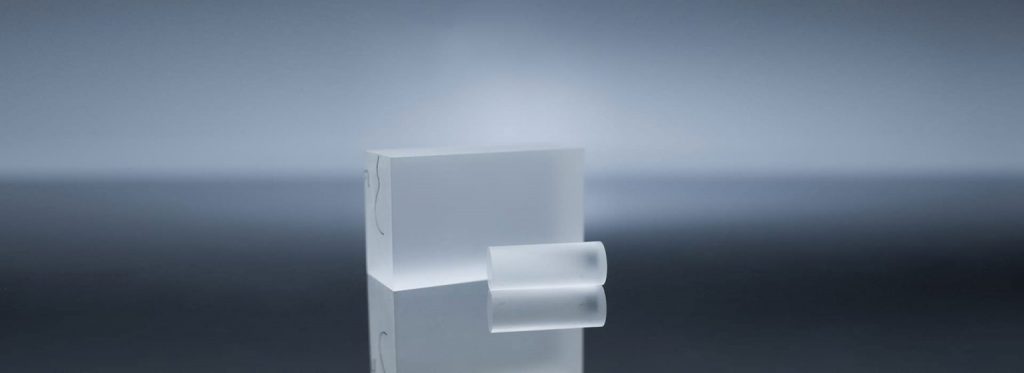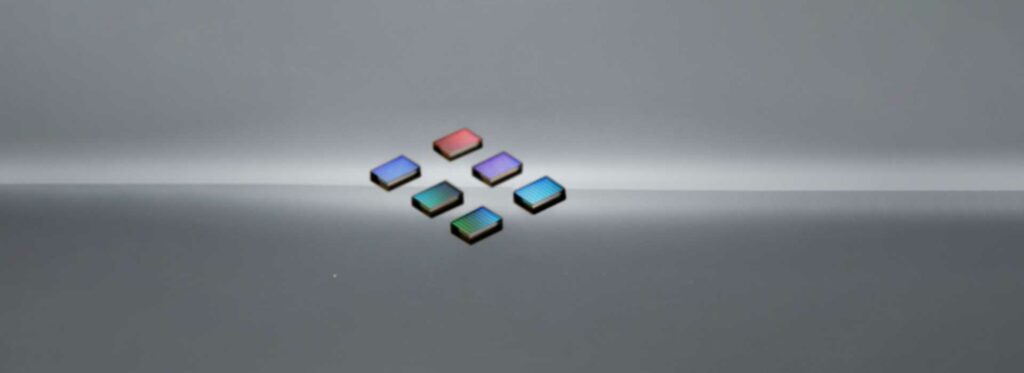Advancements and Future Directions of LBO Nonlinear Crystals
LBO nonlinear optical crystals have undergone significant advancements in recent years, leading to improved crystal quality, optical properties, and device performance. This chapter discusses some of the latest advancements in LBO nonlinear crystals and their potential future directions.
Crystal Growth:
Crystal growth is a crucial step in the production of high-quality LBO nonlinear crystal. Recent advancements in crystal growth techniques have led to the production of larger, higher quality LBO nonlinear crystal. The development of new crystal growth techniques, such as the TSSG method and the hybrid method, has allowed for precise control over crystal orientation and defect density, leading to improved crystal quality.
In addition, the use of advanced techniques, such as in-situ monitoring and computer simulations, has enabled real-time monitoring and optimization of crystal growth parameters, leading to improved crystal quality and yield.
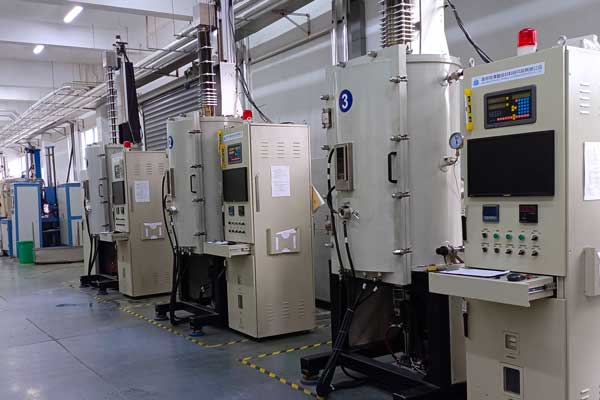
Device Fabrication:
Advancements in device fabrication techniques have led to the development of more compact and efficient nonlinear optical devices using LBO nonlinear crystal. The integration of LBO nonlinear crystal with micro- and nanofabrication techniques has allowed for the fabrication of miniaturized and integrated optical devices, such as waveguides, resonators, and photonic crystals.
In addition, the use of advanced deposition techniques, such as pulsed laser deposition (PLD) and molecular beam epitaxy (MBE), has enabled the growth of LBO nonlinear crystal on various substrates, such as silicon and III-V semiconductors, for integrated photonics applications.
Nonlinear Optical Properties:
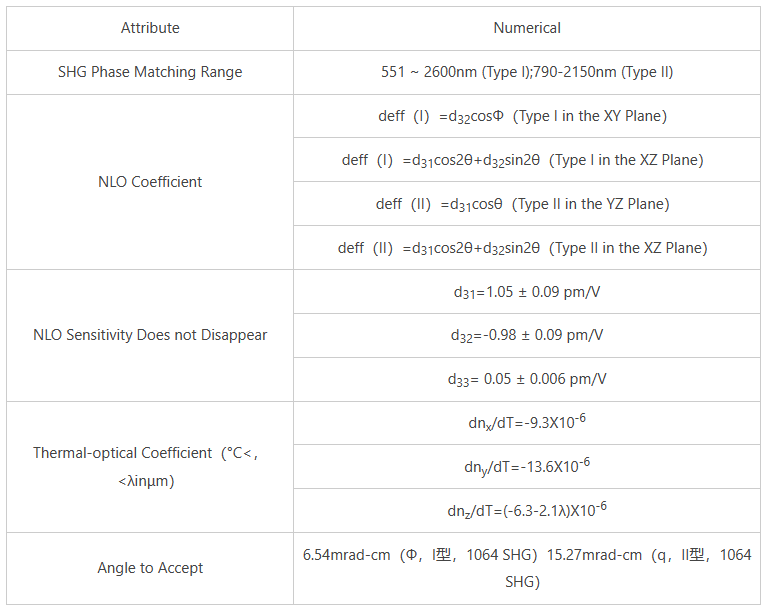
The nonlinear optical properties of LBO nonlinear crystal have been the subject of extensive research in recent years. The development of advanced characterization techniques, such as time-resolved spectroscopy and nonlinear microscopy, has allowed for the investigation of the ultrafast dynamics and nonlinear optical properties of LBO nonlinear crystal.
In addition, the use of advanced materials engineering techniques, such as doping and strain engineering, has led to the enhancement of the nonlinear optical properties of LBO nonlinear crystal, such as increased SHG efficiency and improved phase-matching conditions.
Applications:
The advancements in crystal growth, device fabrication, and nonlinear optical properties have led to the development of new and improved applications of LBO nonlinear crystal. The development of high-power, compact, and efficient frequency doubling and OPA devices has led to their widespread use in various applications, such as laser printing, laser cooling, and quantum optics.
In addition, the development of miniaturized and integrated optical devices using LBO nonlinear crystal has opened up new opportunities in various fields, such as on-chip photonics, sensing, and telecommunications.
Future Directions:
The future directions of LBO nonlinear crystal are focused on the development of advanced crystal growth, device fabrication, and materials engineering techniques to achieve further improvements in crystal quality, device performance, and nonlinear optical properties.
The development of advanced crystal growth techniques, such as the use of high-pressure crystal growth and advanced materials engineering techniques, such as domain engineering and nanostructuring, is expected to lead to further improvements in the crystal quality and nonlinear optical properties of LBO nonlinear crystal.
In addition, the integration of LBO nonlinear crystal with advanced materials, such as two-dimensional materials and plasmonic structures, is expected to lead to the development of novel and advanced nonlinear optical devices for various applications, such as bioimaging, nanophotonics, and energy harvesting.
Conclusion:
The advancements and future directions of LBO nonlinear crystals are focused on the development of advanced crystal growth, device fabrication, and materials engineering techniques to achieve further improvements in crystal quality, device performance, and nonlinear optical properties. The understanding and application of these techniques are crucial for the development and optimization of various nonlinear optical devices and applications.
Challenges and Limitations of LBO Nonlinear Crystals
While LBO nonlinear crystals have unique properties and numerous applications, there are several challenges and limitations that must be addressed. This chapter discusses some of the challenges and limitations of LBO nonlinear optical crystals.
Thermal Management:
One of the major challenges in the use of LBO nonlinear optical crystals is thermal management. The high power density and non-linear effects can generate significant heat, which can lead to thermal damage and reduced device performance.
Various thermal management techniques, such as water cooling, air cooling, and thermal management coatings, have been developed to address this challenge. However, these techniques have their limitations and can lead to increased complexity and cost in the device design.
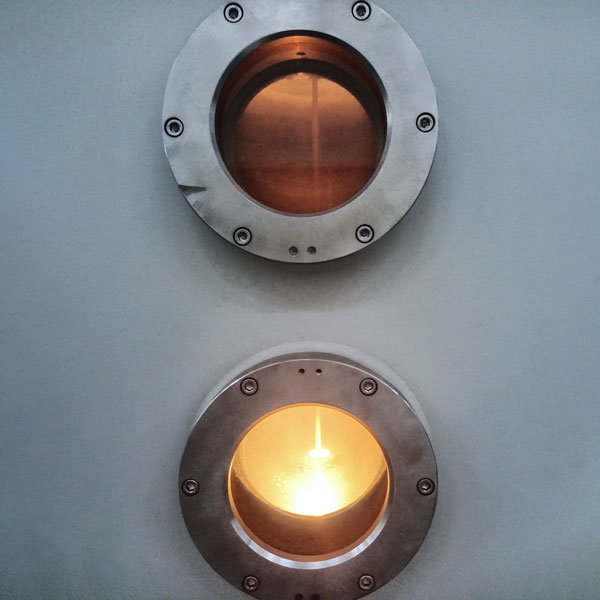
Material Homogeneity and Uniformity:
The quality and performance of LBO nonlinear optical crystals depend on their material homogeneity and uniformity. The presence of defects, such as twinning and dislocations, can affect the crystal quality and nonlinear optical properties, leading to reduced device performance.
Crystal growth techniques, such as the Czochralski and flux methods, have limitations in achieving high material homogeneity and uniformity. Advanced crystal growth techniques, such as the TSSG and hybrid methods, have been developed to address this challenge. However, these techniques require precise control over the crystal growth parameters and can lead to increased complexity and cost in the crystal growth process.
Reliability and Durability:
The reliability and durability of LBO nonlinear optical crystals are crucial for their long-term performance and device lifetime. The presence of defects and impurities can lead to reduced device reliability and durability, leading to increased maintenance and replacement costs.
Various reliability and durability testing techniques, such as accelerated aging and stress testing, have been developed to address this challenge. However, these techniques can be time-consuming and expensive, and their applicability to LBO nonlinear optical crystals depends on their specific application requirements.
Optical Damage:
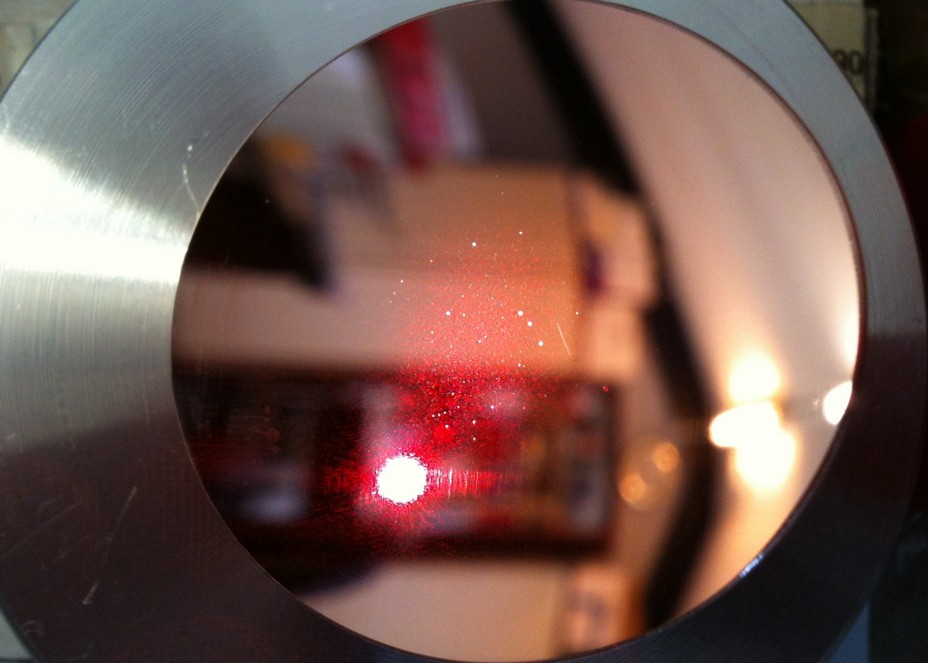
The high-power density and non-linear effects in LBO nonlinear crystals can lead to optical damage, such as optical breakdown and laser-induced damage. Optical damage can affect the crystal quality and device performance, leading to reduced device lifetime and increased maintenance costs.
Various optical damage testing techniques, such as laser-induced damage threshold (LIDT) testing, have been developed to address this challenge. However, these techniques can be time-consuming and expensive, and their applicability to LBO nonlinear crystals depends on their specific application requirements.
Conclusion:
The challenges and limitations of LBO nonlinear optical crystals are focused on the areas of thermal management, material homogeneity and uniformity, reliability and durability, and optical damage. The development of advanced crystal growth, device design, and testing techniques is crucial for addressing these challenges and limitations and optimizing the performance of LBO nonlinear optical crystals for various applications.
The understanding and application of these techniques are crucial for the development and optimization of various nonlinear optical devices and applications. The continued research and development in the field of LBO nonlinear optical crystals are expected to lead to further improvements in crystal quality, device performance, and application areas.
Comparison of LBO Nonlinear Crystals with Other Nonlinear Crystals
LBO nonlinear crystals are not the only nonlinear optical crystals available for various applications in optics and photonics. This chapter compares LBO nonlinear crystals with other common nonlinear crystals, such as KTP, BBO, and PPLN.
Nonlinear Coefficient:
The nonlinear coefficient of a crystal determines its efficiency in generating nonlinear optical effects. LBO nonlinear crystals have a high nonlinear coefficient, which makes them efficient in generating second-harmonic generation (SHG) and other nonlinear effects.
KTP and BBO nonlinear optical crystals also have high nonlinear coefficients and are commonly used for various applications in optics and photonics. PPLN, on the other hand, has a lower nonlinear coefficient but is used for efficient optical parametric generation (OPG) and optical parametric oscillation (OPO).
Crystal Structure and Phase-Matching:
The crystal structure and phase-matching conditions of a nonlinear crystal affect its nonlinear optical properties and efficiency. LBO nonlinear optical crystals have a monoclinic crystal structure and can be phase-matched using various techniques, such as temperature tuning and quasi-phase matching.
KTP nonlinear crystals have a tetragonal crystal structure and can be phase-matched using birefringence and angle tuning. BBO nonlinear crystals have a rhombohedral crystal structure and can be phase-matched using various techniques, such as temperature tuning and angle tuning.
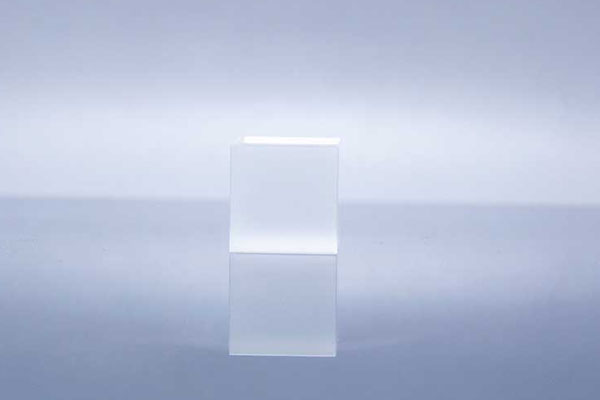
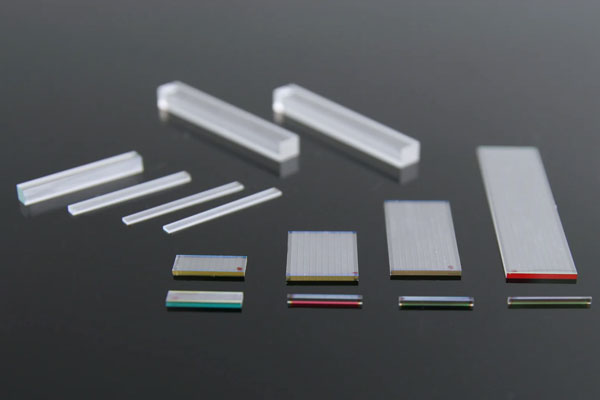
PPLN nonlinear crystals have a periodic domain structure and can be phase-matched using quasi-phase matching, which allows for precise control over the phase-matching conditions.
Damage Threshold:
The damage threshold of a nonlinear crystal determines its maximum power handling capability and is an important factor in the design and optimization of nonlinear optical devices. LBO nonlinear optical crystals have a high damage threshold, which makes them suitable for high-power applications.
KTP and BBO nonlinear crystals also have high damage thresholds and are commonly used for high-power applications. PPLN nonlinear crystals have a lower damage threshold but are used for low-power applications.
Material Availability and Cost:
The availability and cost of a nonlinear crystal are important factors in the selection and optimization of nonlinear optical devices. LBO nonlinear optical crystals are commercially available and are relatively affordable.
KTP and BBO nonlinear crystals are also commercially available and are widely used for various applications in optics and photonics. PPLN nonlinear crystals are less commonly available and can be more expensive than other nonlinear crystals.
Applications:
The selection of a nonlinear crystal depends on the specific application requirements, such as the desired nonlinear optical effect, power handling capability, and cost. LBO nonlinear crystals are commonly used for various applications, such as frequency doubling, optical parametric amplification (OPA), and sum-frequency generation (SFG).
KTP and BBO nonlinear crystals are also commonly used for various applications, such as frequency doubling, OPA, and electro-optic modulation. PPLN nonlinear crystals are commonly used for low-power applications, such as quantum optics and quantum information processing.
Conclusion:
LBO nonlinear crystals are not the only nonlinear crystals available for various applications in optics and photonics. KTP, BBO, and PPLN are other common nonlinear crystals that have their unique properties and advantages.
The selection of a nonlinear crystal depends on the specific application requirements, such as the desired nonlinear optical effect, power handling capability, and cost. The understanding and comparison of these nonlinear crystals are crucial for the development and optimization of various nonlinear optical devices and applications.
LBO Nonlinear Crystals in Practical Applications
LBO nonlinear crystals have numerous practical applications in various fields, such as optics, photonics, and materials science. This chapter discusses some of the practical applications of LBO nonlinear crystals.
Frequency Doubling:
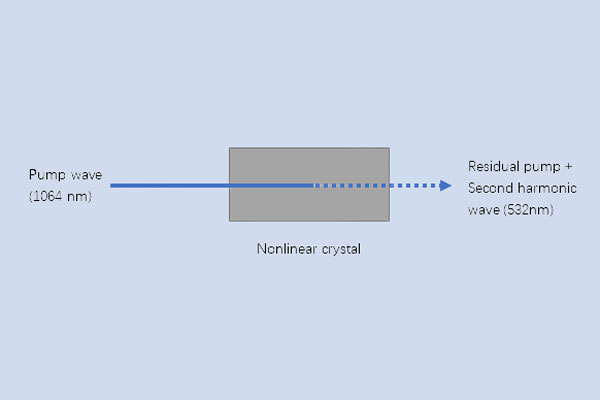
Frequency doubling is one of the most common applications of LBO nonlinear crystals. LBO nonlinear crystals are efficient in generating second-harmonic generation (SHG) of various laser wavelengths, such as Nd:YAG, Ti:Sapphire, and fiber lasers.
Frequency-doubled lasers are used in various applications, such as laser printing, laser cooling, and medical laser systems. The high efficiency and broad spectral range of LBO nonlinear crystals make them a suitable choice for frequency doubling in various applications.
Optical Parametric Amplification (OPA):
Optical parametric amplification (OPA) is another common application of LBO nonlinear crystals. LBO nonlinear crystals can be used for efficient OPA of various laser wavelengths, such as Ti:Sapphire and femtosecond lasers.
OPA is used in various applications, such as ultrafast spectroscopy, optical communication, and quantum optics. The high efficiency and tunability of LBO nonlinear crystals make them a suitable choice for OPA in various applications.
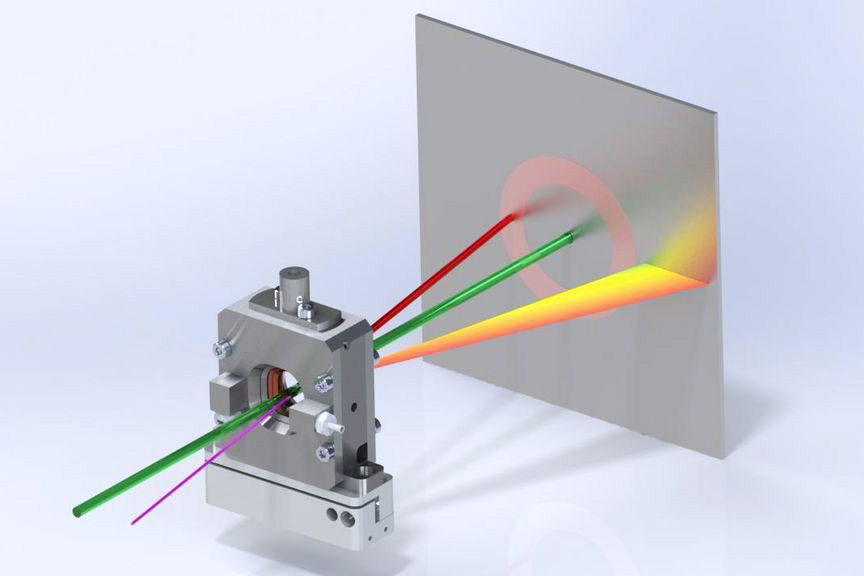
Sum-Frequency Generation (SFG):
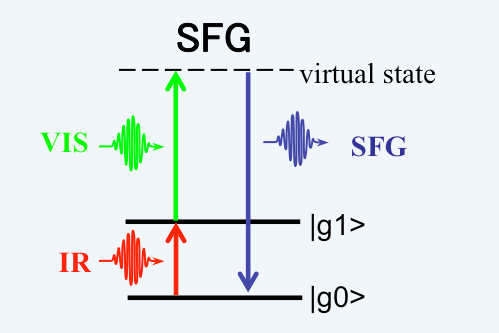
Sum-frequency generation (SFG) is another application of LBO nonlinear crystals. LBO nonlinear crystals can be used for efficient SFG of two input laser wavelengths, resulting in a single output wavelength.
SFG is used in various applications, such as surface and interface analysis, biomolecule detection, and chemical sensing. The high efficiency and spectral range of LBO nonlinear crystals make them a suitable choice for SFG in various applications.
Quantum Optics:
LBO nonlinear crystals have also found applications in quantum optics. The high efficiency and broad spectral range of LBO nonlinear crystals make them suitable for various quantum optics experiments and applications, such as single-photon generation and entangled photon generation.
In addition, LBO nonlinear crystals have been used in various quantum information processing applications, such as quantum teleportation and quantum key distribution.

Other Applications:
LBO nonlinear crystals have also found applications in various other fields, such as materials science and environmental sensing. LBO nonlinear crystals have been used for various materials science applications, such as surface and interface analysis and crystallography.
In addition, LBO nonlinear crystals have been used for environmental sensing applications, such as gas detection and air pollution monitoring.
Conclusion:
LBO nonlinear crystals have numerous practical applications in various fields, such as optics, photonics, and materials science. The high efficiency, broad spectral range, and tunability of LBO nonlinear crystals make them suitable for various applications, such as frequency doubling, OPA, SFG, and quantum optics.
The continued research and development in the field of LBO nonlinear crystals are expected to lead to further improvements in crystal quality, device performance, and application areas. The understanding and application of LBO nonlinear crystals are crucial for the development and optimization of various nonlinear optical devices and applications.

Frank
Frank graduated from the University of Shanghai for Science and Technology, majoring in optics. As a technical engineer at Crylink Company, he deeply understands crystal materials and laser components.
Related Video(s) with this Article
Related Product(s) with this Article
Related Application(s) with this Article


